Last summer, Marcel the Shell With Shoes On charmed audiences across the world as the little guy made a giant leap to the big screen.
Directed by Dean Fleischer Camp and featuring the voice talents of co-writer Jenny Slate, the A24 film currently finds itself nominated for the Academy Award for Best Animated Feature, and the technique with which it was made was rather remarkable, as it involved two DPs, who basically shot the film twice using distinctly different methods.
Director of Photography Bianca Cline shot the live-action components, holding space for pint-sized Marcel himself, before handing the footage over to Stop-Motion Director of Photography Eric Adkins, who brought the adorable seashell to life one carefully assembled frame at a time, as he had to painstakingly match Cline’s lighting, framing, and focus. Adkins’ stop-motion footage and Cline’s live-action footage blended together to create the final product, which has earned raves from critics and audiences alike.
Below the Line spoke to Bianca Cline and Eric Adkins over Zoom a while back, and they discussed their unique working relationship, how they each came to cinematography, whether Marcel is just for kids or people of all ages, and what’s next for each of them behind the camera. The following interview was conducted before Cline was hired to finish what the late Halyna Hutchins started on the Alec Baldwin movie Rust. Click here for more on that story.
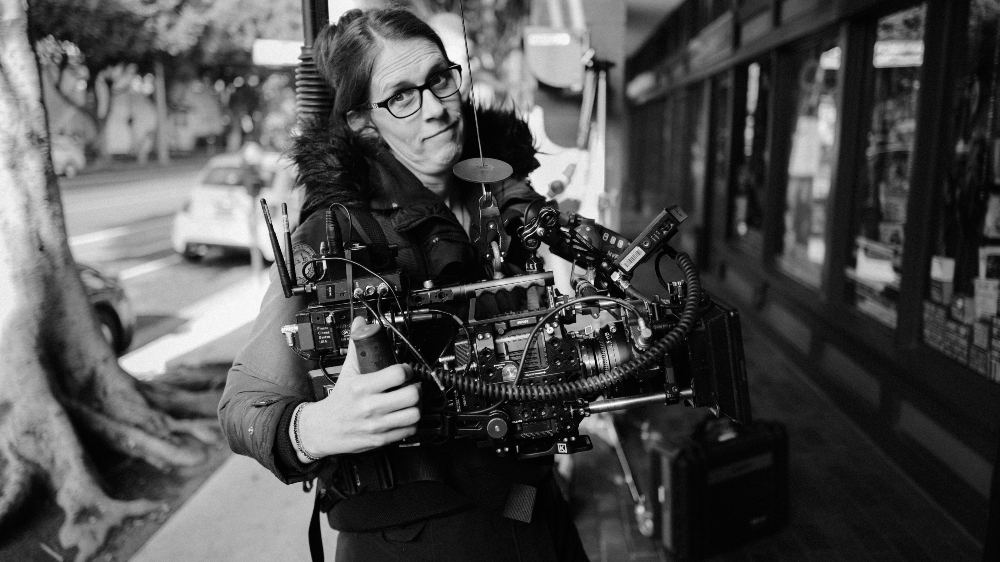
BTL: How did each of you come to cinematography in the first place and get your start in the business?
Bianca Cline: When I was a kid, I was always doing plays because I didn’t have access to a camera, [but] when I was a teenager, my parents bought a video camera, and I quickly commandeered that camera and started making movies. And then, when I was 15-ish, my mom was like, ‘do you know you could do that for a living? Like, that’s a real thing.’ And I was sold. I was like, ‘okay, that’s it, I’m doing that.’
I mean, I grew up in LA, so there was always film production going on around me, which is probably why my mother knew it was a real job. I’m a third-generation Los Angeleno, so movies are just part of life here. There’s more to it, but that’s my general “coming to cinematography” story.
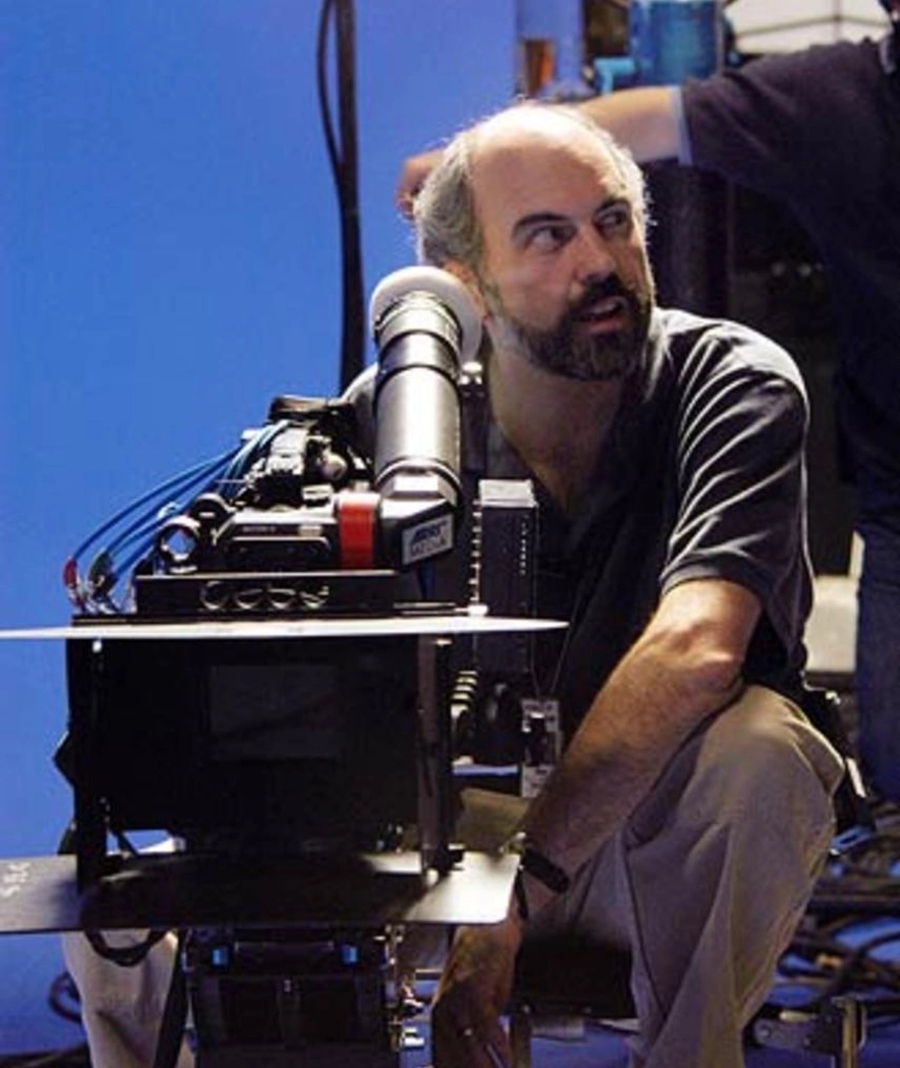
Eric Adkins: Let’s see… I came from a photojournalist background and then went to film school at Cal Arts. Before graduating, I actually worked with some art directors who played around with miniatures and built some amazing sets, but I didn’t actually do that straight out of the game.
I graduated and did additional photography, shooting live-action music videos and all that, and then, one little music video ended up having a little bit of stop-motion in it, so we figured out how to do that, and then all of a sudden, it was like, ‘here, can you light these sets like we’re going to shoot something because we’re trying to sell this project.’
And then that didn’t work out, but I got carried off to Will Vinton Studios, which was heavy into clay-type stuff, which I’d never played with, but it was really fun because you have to create everything in stop-motion. You don’t inherit anything. But at the same time, I never got rid of my live-action roots and did some technical, bluescreen-type features.
It’s just been very fun in the sense of discovering and observing life through a [certain] eye. Even having a CG tie-in has helped me with photography in the sense that, you throw a light at something and it doesn’t reflect off of it so you say, ‘well, let’s put a light there’ to mimic what would happen, so there are many different angles and yet they’re all sidestepping and interwoven. It’s just really fun to keep doing different types of work.
BTL: It’s so interesting to hear how your mind works with regard to light and that kind of stuff. So when did the two of you first become aware of Marcel the Shell? Had you seen the short film prior to speaking with Dean about the feature?
Bianca Cline: I don’t know if it’s embarrassing or not, but I had never heard of it before. I somehow missed the craze, and especially having three little kids, I’m like, ‘I don’t know how I didn’t come across this.’ My agent sent me the script and the short film, and I was pretty hooked, instantly. I was like, ‘this is amazing.’ But before that, I hadn’t heard of it at all.
Eric Adkins: I think I briefly caught a glimpse of it but then when I said, ‘oh, I just got an offer to shoot this test for Marcel, and my daughter, who was 21 at the time, was like, ‘oh really?‘ She knows all about that, [with] that generation growing up on YouTube and all that. The craze had passed me by but had I been to Sundance that year, I’m sure I would’ve seen nothing but little shorts of it. But it was fun to have it be fresh and new and a different type of character.
BTL: Were there things in the short you wanted to change or keep the same from a visual perspective?
Cline: They were very kind of rudimentary, but the feeling was there. We wanted it to feel like a person [with] a big spirit even though they were constantly dwarfed by their surroundings. In the short films, Marcel is always standing on something that gives you [a sense of] scale of how small he is, and he’s constantly talking about the things that are difficult for him at his size, and how the things that are really tiny and that we don’t think about are actually a big deal for him.
So we wanted to translate that part of it, for sure, to the photography. How do you put him in places people don’t normally think about, like underneath a cupboard — all these things that are mundane for us are, like, a really big deal and kind of a magical world if you have a one-inch character. It’s fun to be on a mantle or inside of a window well, or in the grass… all these things that are much more fun when you’re one inch tall.
Adkins: When I first saw the [shorts], I was first struck by the live-action aspect of it. I looked at it like, ‘that’s something you don’t necessarily see in stop-motion,’ and because this was real grassroots, do-it-yourself animation — and it looked great, but it was created in an editing process — I thought, they’re channeling through a different direction, where I’m used to puppeteers doing this and that. But the daylight aspect and [exploring] the real space of surfaces and the lighting of things moving, and how someone may not have bothered to put moving branches in a stop-motion film, the wind blowing something from outside the window…
I had a stop-motion job where we basically scouted a Victorian house and then you look at everything and you have to block everything out so nothing changes in time and then you recreate the lighting and all that, whereas this was similar. Bianca got to do all this daylighting, and I thought it was a nice challenge to actually play with daylight tools for stop-motion. Usually, they’re tungsten-based or other small little things, so it was just kind of fun to look at the original footage and then try to get out of it what makes it unique, and how you can further enhance that in this bigger spectacle.
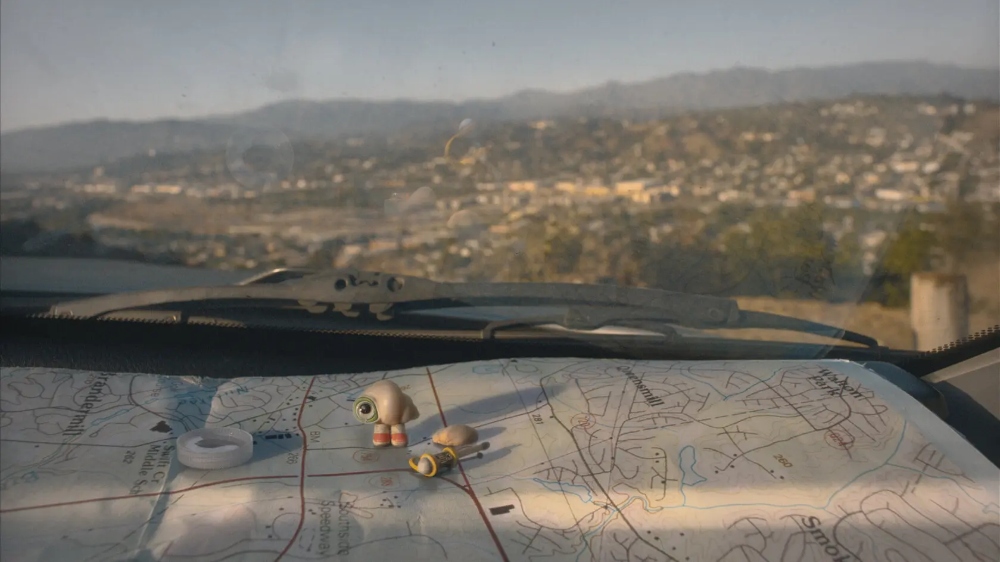
BTL: What was the collaborative process like and how did it work between the two of you on set?
Cline: I didn’t actually know, Eric, that you had filmed those tests. Because when I first came to the project they showed me a test, it was like one little scene of what Marcel was going to look like and how he could be animated into the real world. I first met you maybe a week or so into pre-production, and that was one of the first things — that was where we [had] to start that relationship because it was very symbiotic.
I tried to approach it creatively just like, let’s pretend Marcel is 100 percent real and he’s gonna be there on set, and this is how I would photograph the movie. And then secondarily, take into consideration, ‘how do we do that? How do we make it work with stop-motion between all of our teams?’
Adkins: When I came into the live-action space and met Bianca, I was just all feelers and trying to observe, so I was documenting everything. Not only video, and endless terabytes of footage, but also still photography and tape measures and all that stuff. But coming into it and being open to what was around me and what was in the act of being created, to me, is also part of discovery.
Maybe it’s the good little brother in me that I’m able to, like, see what other people do and try to, like, work with that and not make crisis mistakes but try to work with that and observe what can happen when something is created. And the fact that I knew my plate was going to be full with recreating what was captured, I knew what I had to study and think about, and I knew that this was my opportunity to get it in my mind.
And had COVID not interrupted the process, I felt I was much more ready when we first started with the stop-motion because we shot for two weeks and then we were shut down for two-and-a-half months, and it’s like [there was a] lull of trying to figure out, like, ‘oh, did I just lose some knowledge or memory of what we were doing?’ I have a good peripheral memory, so I can capture and remember things that happened, and I just tried to fully absorb it like a sponge.
BTL: Bianca, how did the pandemic affect your process and what you were doing?
Cline: Well, not that much for me, because we filmed in August/September of 2019, so our part was really done. It was really just the stop-motion then, but we were really finishing as we went. We had it finished, locked, and colored before they started the stop-motion, so we were pretty done, but you guys were right in the thick of it.
Adkins: We were hoping, very much so, that, luckily, we had two weeks of production where we really got some nice footage and we were really positive about what we were getting, because no one wanted to say the CG word during the lockdown of COVID. Because yeah, they could’ve finished it that way, but I think we proved that it [we had to go] onward and it had to be faithful to the original because it’s all about that.
And then the fact that this is a COVID feature… to have a story that is so uplifting, and in a crisis — let’s say a lingering soft crisis — it just feels good. People say there [are] some negative things that happen in this film, but it’s like, wait a minute, it’s not negative, it’s very positive and uplifting. And yes, it may be melancholy in its spirit but there’s humor, and there’s humor in life, and if you can’t embrace the hard times then it becomes a survival film.
I think it just came out at the right time. We had no idea that this was going to be the concept of it. The fact [is] that COVID was a part of this film and we didn’t have any outbreaks on the stage or anything, but we had to rethink, after a couple of weeks, how we were going to do it. We had this space to shoot in for a 16-hour day, and we’re not going to shoot 16-hour days, but that enabled us to stretch out and have different shifts and be able to have [fewer] people on the stage, and kind of work out, as a system, how you’re going to shoot this to make it safe for everyone.
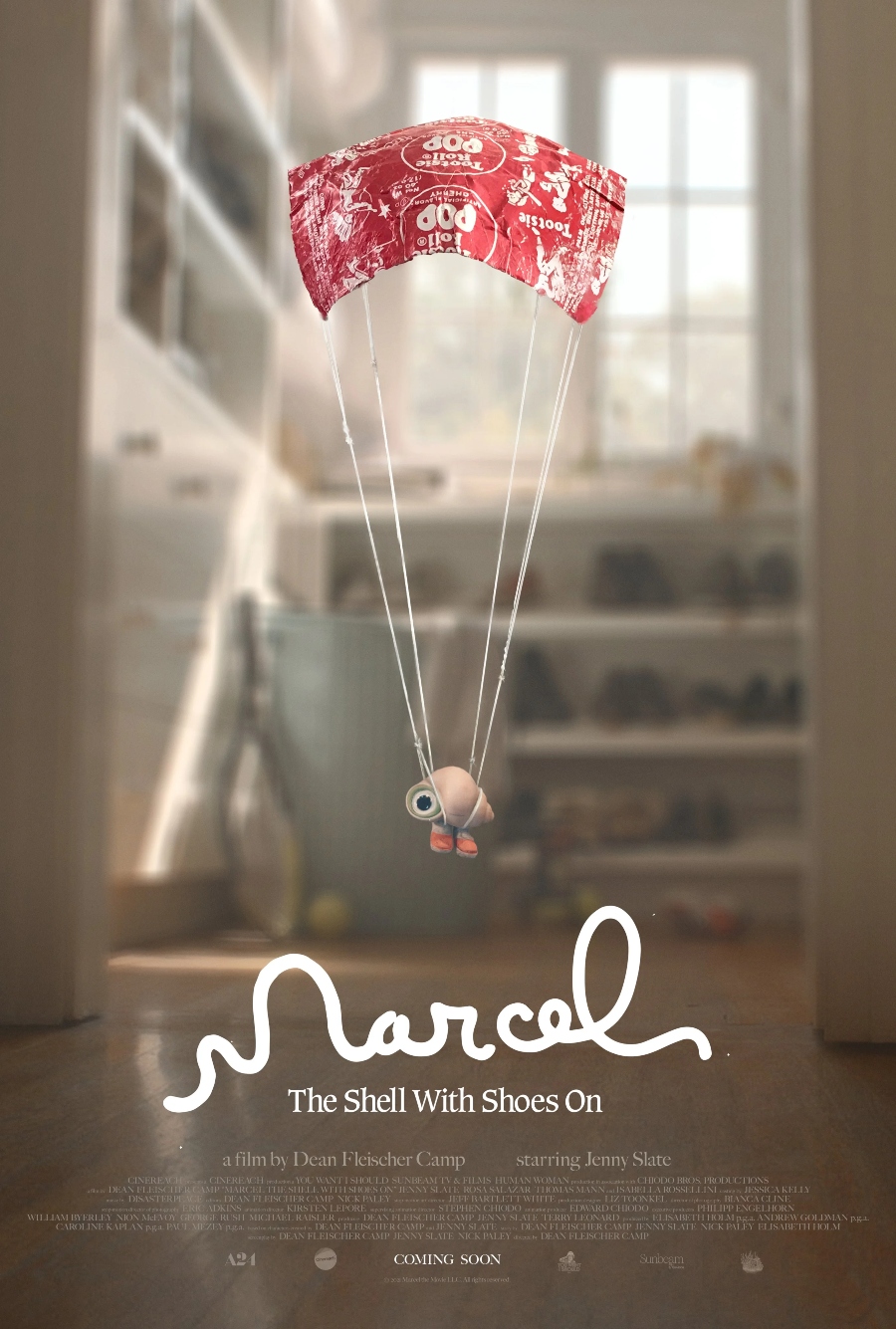
BTL: I know that stop-motion animation can be a painstaking process, so how long does it take to capture each minute of footage??
Adkins: Well, we shot the feature in 12 weeks, because the characters have limited limbs and they kind of couldn’t really walk, they kind of waddled and stuff. So it took some time to get used to simple movements and style of movements. That factoid depended on the complexity of the shot and if it was just Marcel, which is how we were able to do it so quickly. You say 12 weeks, but that’s actually quite fast, but if all of the shots were like the shot of all the characters bouncing off of the sofa and then ice skating on that, then it would have been 10 times longer. But the fact that we could fit two or three shots in a day with a specific animator, and we had 10 animators and 15 sets and 15 cameras, and we were always able to get ahead of the animators, especially after COVID, because it’s like we had three hours in the morning where we could just set anybody up and make sure they’re ready to go, and then animators would show up and we’d get ’em launched. And then the end shift, it was just like setting up cameras so that the morning shift could really get in there.
BTL: Bianca, can you talk about what camera package you used for Marcel?
Cline: Yeah, we filmed with an Alexa Mini. We had tested several camera systems trying to figure out what would be the right look for it and we really ended up with the Alexa Mini. It just had the right look for us. We wanted a heightened, documentary feel. We looked at the Sony Venice, which was kind of too high resolution, but the Mini was just right for us.
We did a lot of lens tests in pre-production, trying to figure out what was going to be right for us. There were just a lot of logistical configurations that are different when you’re filming somebody that small. So we ended up using a lot of prisms and we ended up using a set of rehoused still Nikon glass that was something that I wanted to use for the characteristics of the lens. They were a little bit softer around the edges but still pretty sharp when it was in focus, which I thought was important for the look because we were always filming Marcel. They were also very close-focus, and I made that decision, and then Eric was like, ‘that’s just what we use on the stop-motion stage so that’s perfect for us.’ So it was fortuitous in that regard.
BTL: Do you think of Marcel as a movie for kids and or is it a movie for adults given some of its deeper, weightier themes?
Cline: I think I would recommend it to a 50-year-old person with no kids, and I would also recommend it to a 5-year-old. I know every movie wishes that they were that way, that everyone from age 2 to age 80 can go [it], but I think it’s true with this film. 4-year-olds love it, and a 30-year will come away crying and laughing the whole time. You have people just dying laughing, and two minutes later, they’re crying. It’s great for all ages and I hope people believe it when I say it.
Adkins: I completely agree that it is authentic and one of the first true family films. [We’re] in an age where, [yes it was] in the theater for broader expense, but there is such emotion there that if people end up watching this on streaming later on, the emotional impact is the same that a big screen has. Even if you’re watching on a small screen, it feels big and I think you’ll get true emotion out of it, but there are so many older, not jokes, but real situations that kids and adults identify with. If it’s not just about loss, it’s also about having faith in one’s self and how you feel about yourself, so I think anyone can watch it.
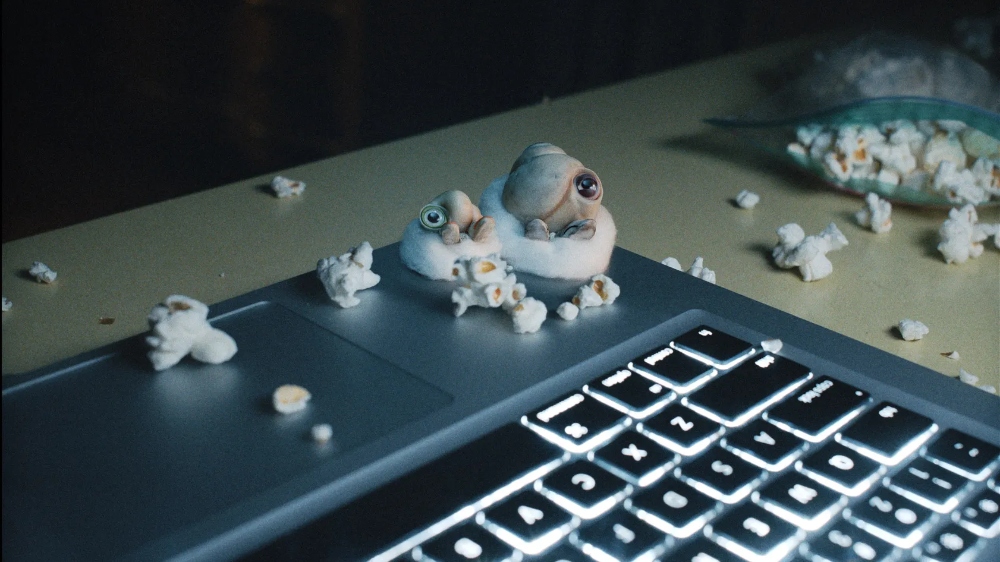
BTL: I saw this movie with an audience in Boston and believe me, you had them eating out of the palm of your hand. Do you think we could ever see a sequel to Marcel?
Cline: I don’t know, I think that’d be up to Dean, really. I think that what’s really great about this particular film is that it’s not just playing on the fame that Marcel had. We tried to avoid the same jokes and shtick. It’s not, “if you loved the short films, come see an hour-and-a-half of Marcel,” it’s a really beautiful story that works and would play well even if there weren’t [any] internet shorts. It’s not just a bigger version of what you saw before, it’s a really well-written story and it has a great arc. It’s lovely.
Adkins: The short films were what they were and then this film, there was so much stuff, but it didn’t lose track of the original source. The humor was exactly the same and it was expanded, so could there be another film? There are many real-life situations and many jokes and practical situations that could happen that could take it there, but it’s their project if they want to continue it.
BTL: What’s next for each of you?
Cline: I’ve mostly been doing commercials lately, but I just did a film that I can’t really talk about yet. I’ve been interviewing for a couple of TV shows. It’s weird because there’s kind of a gap in my career. It’s like, “oh, I did Marcel,” but then there wasn’t really much going on during COVID, so now I’m just starting to film again.
Adkins: I immediately went from Marcel to working with Henry Selick [on Wendell & Wild] to be a Sequence Cinematographer, which they call a Lighting Cameraman. They were expanding and needed more help, so I was put up there for a year. And then I immediately started this project, which I really can’t talk about in the office I’m sitting in now, but it’s a streaming series [that’s] about 36 episodes that’s a pretty major thing and it should be quite beautiful. I’m happy to be doing it and playing with toys that are new to me. They’re fun to fully embrace and really dive deep into it.
Marcel the Shell With Shoes On is now streaming on Showtime Anytime, and it’s also available to buy or rent on all major VOD/digital platforms courtesy of A24.





